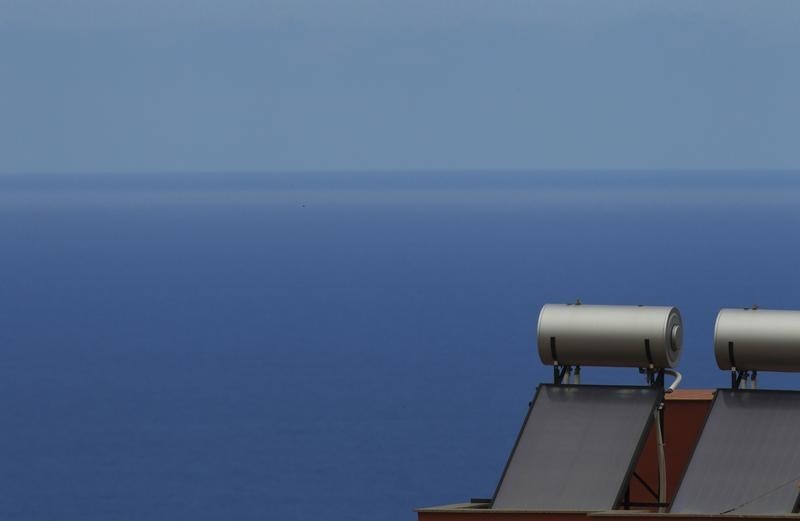By Beth Pinsker
NEW YORK (Reuters) - When you say you want to help the environment, few steps could signal it any louder than putting solar panels on the roof of your house.
It is easier than ever for Americans to tap the sun's energy with costs coming down and the number of providers going up. In 2015, residential solar use jumped by more 135,000 installations in the United States, according to the Solar Energy Industries Association, bringing the total up to 748,000 homes. At the same time, the SEIA says initial costs dropped 73 percent since 2006, and ongoing costs fell 45 percent since 2010.
For Tom Moser, a homeowner in Tucson, Arizona, the decision to go solar was not a hard one. Moser spends his days helping people invest their retirement portfolios in green ways, as head of the Impact Investing Division of Portfolio Resources Advisor Group, so it was all part of putting his money where his mouth is.
Here are Moser's everyday tips on getting a solar system up and running:
Q: What did you do to get started?
A: My wife and I bought house in 2012, and solar was one of the first things I wanted to get installed - because payback starts from the day of installation.
We compared buying a system outright versus leasing. At that time, it seemed better for our purposes that we lease a system for 20 years. Even after tax credits, it was a larger outlay of capital to buy at that time. I paid down $15,000, and now I don't have a monthly bill. SolarCity (http://solarcity.com) owns it, and they are responsible for the maintenance.
Q: Do you generate enough electricity for your whole house?
A: The electricity bills averaged around $280 a month for a 3,100-square-foot house (before solar). When you start doing the math on it, in five years, I'll break even.
Right now, we are producing more energy than we use, so we get a slight rebate for the extra energy we are feeding into the grid. In 2014, I think it was around $100. It's all seamless.
Q: What happens if your needs expand in the future?
A: We bought an extra large number of panels in case our needs did expand. Maybe there will be a family living here down the road.
If we buy an electric car, we could just plug into our home, and it wouldn't cost a lot. That's another benefit.
Q: Are you seeing others in your neighborhood join up?
A: In Arizona, like in other states, our utilities are fighting with the solar companies over pricing. When the local utility lowered the amount they were crediting for solar, there was a rush for homeowners to get in.
Q: Did you have any trouble with your homeowners' association?
A: They were very accommodating. Many homeowners around here have outdoor pools. Some people are putting in solar hot water systems. With a thermal pool set-up, you use it or you lose it.
Q: Has the solar shift led you to other types of green living?
A: We have four large cisterns, 1,000 gallons each. We're able to collect rainwater and approximately 3/4 of our outdoor water use is covered.
Q: How has your solar use impacted your investment strategy?
A: I see an increase in the number of people who want to be dark green investors - who really wants to make an impact with what they eat, water use, etc. - but there aren't a whole lot of options in the mutual fund area.
The best thing I can do is show people. They come to my home, they get the idea and they get excited.
